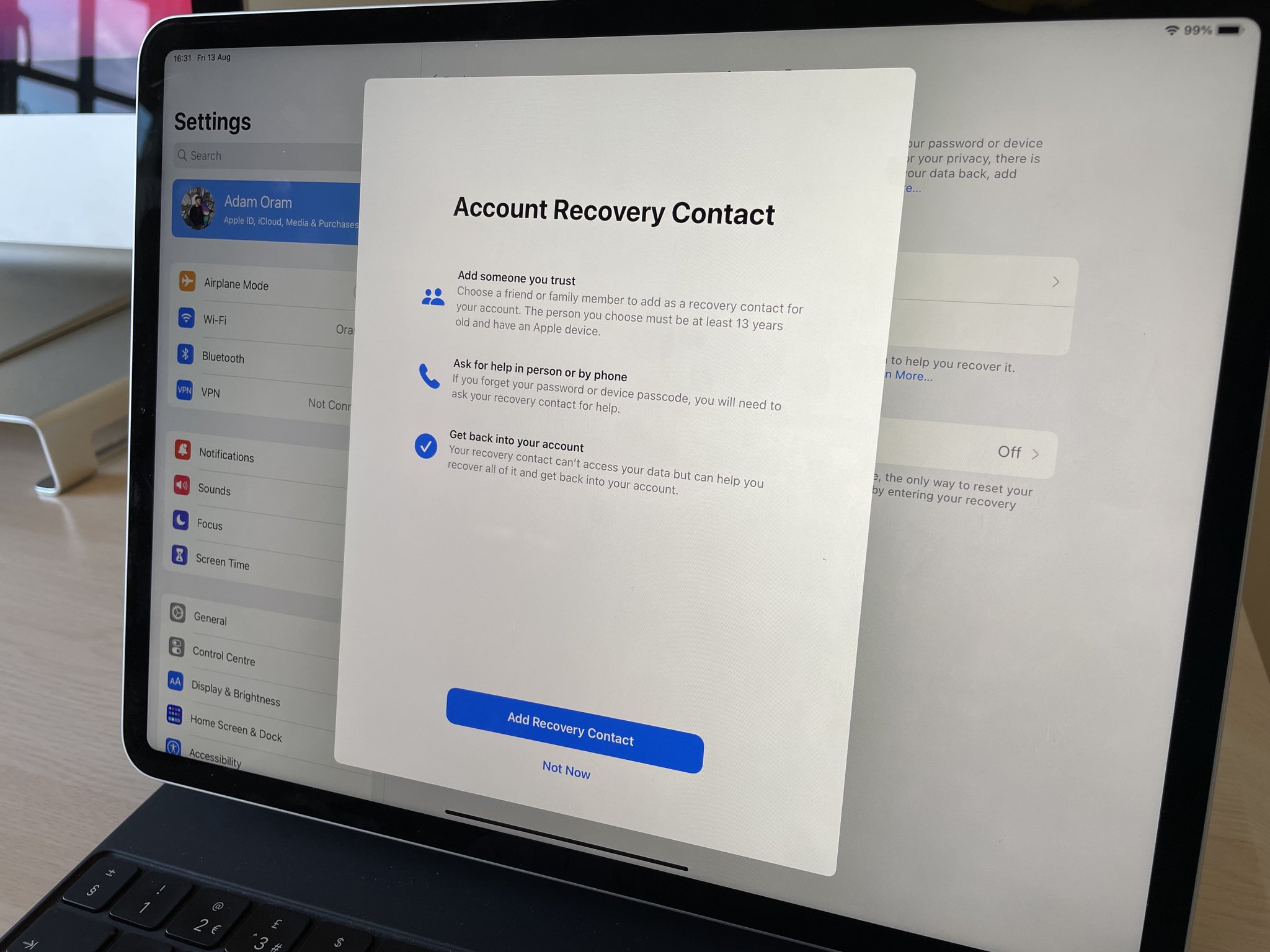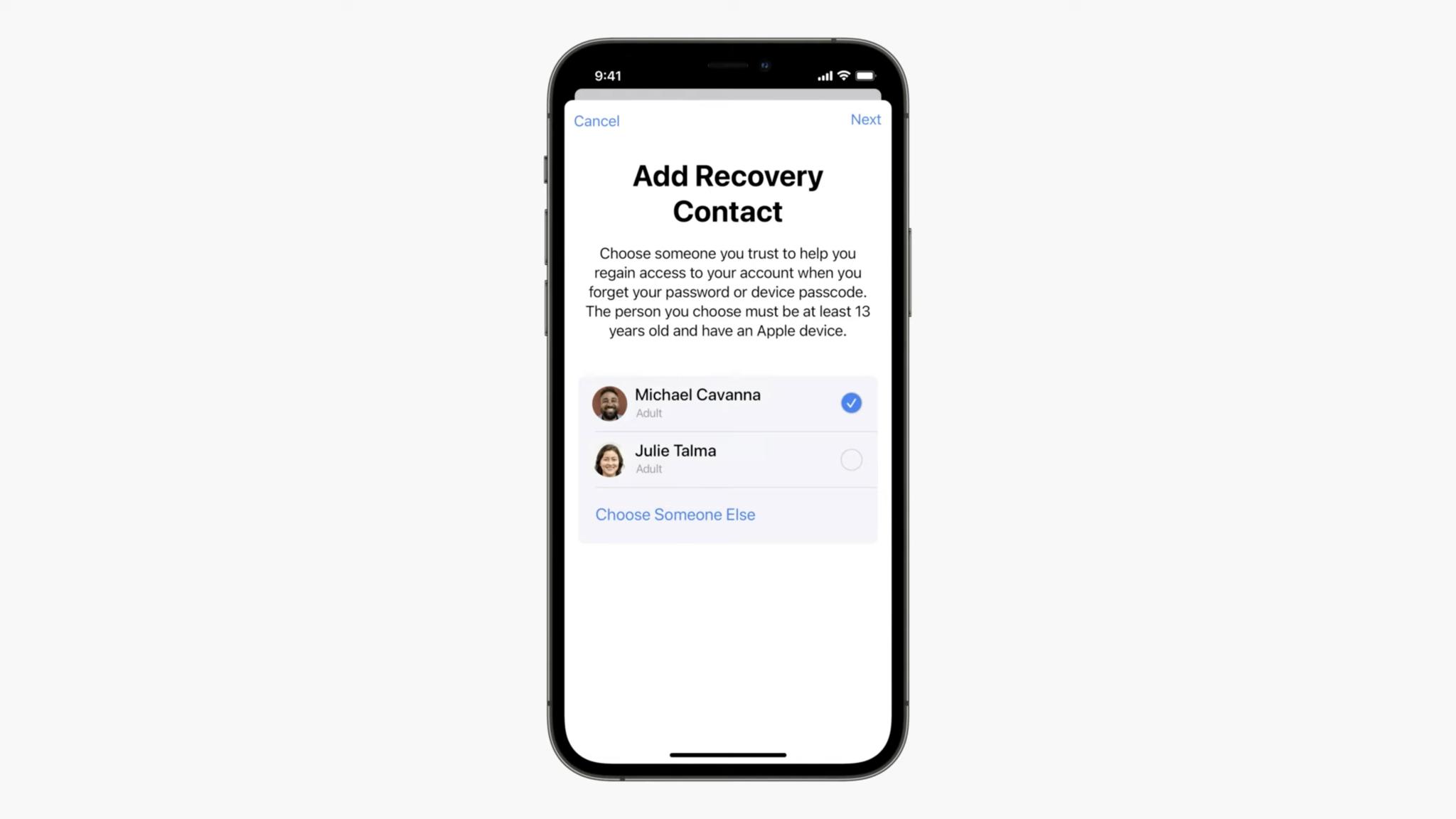
Your Apple ID is super important. It is the account you use to access all kinds of Apple services, from iCloud and the App Store, to Apple Music, FaceTime, iMessage and much more.
The great part about it is that you only need to remember one Apple ID and password to log in to all things Apple and enjoy the best iPhone experience, but the downside is that forgetting that password can cause a world of pain. While there are various ways to reset your Apple ID password already, Apple added a new one in the form of Apple ID Recovery Contacts.
Here's everything you need to know about Recovery Contacts.
Apple occasionally offers updates to iOS, iPadOS, watchOS, tvOS, and macOS as closed developer previews or public betas. While the betas contain new features, they also contain pre-release bugs that can prevent the normal use of your iPhone, iPad, Apple Watch, Apple TV, or Mac, and are not intended for everyday use on a primary device. That's why we strongly recommend staying away from developer previews unless you need them for software development, and using the public betas with caution. If you depend on your devices, wait for the final release.
What are Apple ID Recovery Contacts?
Your Apple ID Recovery Contacts are trusted people that you choose that can help you regain access to your account if you forget your password or get locked out.
Here's how Mike Abbott, VP of Apple Cloud Services, described it when announcing the upcoming feature at WWDC:
"You'll now have the option to add people you trust, like family and friends, to a Recovery Contact list. They won't get any access to your account, but if you ever forget your password, you can call them to get the code you need to get right back in. It's fast, easy, and secure.
Since your Apple ID is so important, it's great to have yet another way to get back into your account.
Master your iPhone in minutes
iMore offers spot-on advice and guidance from our team of experts, with decades of Apple device experience to lean on. Learn more with iMore!
How do Apple ID Recovery Contacts work?

It's super easy to add Apple ID Recovery Contacts through your device's Settings app. The feature is only available in iOS 15 and iPadOS 15 betas right now, with Recovery Contacts officially launching in the fall when the final public versions of Apple's software updates will be released.
Once you have added a Recovery Contact or several, we are assuming that they will need to approve it on their device.
Subsequently, if you are to forget your Apple ID password or get locked out of your account, you'll be given the option to call one of your Recovery Contacts and have them give you the necessary code to regain access to your account.
We don't yet know exactly how Apple will provide your contact with the code, but we assume you'll trigger something on your end as a part of the account recovery process. Since Recovery Contacts have to have an Apple device, they'll probably get a pop-up on their device featuring the code you need.
What happens if my Apple ID Recovery Contacts are unavailable?
There are many other means by which you can reset your Apple ID password, so your Recovery Contact(s) being unavailable is not the end of the world. Since the feature is still in beta, we don't have all of the details on exactly how it will work in reality if you try to use a Recovery Contact who is unavailable.
Do Apple ID Recovery Contacts have to be a part of my iCloud Family Sharing setup?
No, your Apple ID Recovery Contacts do not need to be a part of your Family Sharing setup. They simply need to be someone you trust, aged 13 or over, with an Apple device.
How do Apple ID Recovery Contacts differ from Digital Legacy Contacts?
Alongside Recovery Contacts, Apple also unveiled a new Digital Legacy program. Though they both have implications for your account, they are two distinct features.
You'll use Recovery Contacts to access your own account when you've forgotten your password. Legacy Contacts, on the other hand, allows someone else to access your account in the event of your death. You get to choose who your Legacy Contacts and Recovery Contacts are, and they do not have to be the same people.
Any questions?
Still, have questions about Apple ID Recovery Contacts? Let us know in the comments below.
Adam Oram is a Senior Writer at iMore. He studied Media at Newcastle University and has been writing about technology since 2013. He previously worked as an Apple Genius and as a Deals Editor at Thrifter. His spare time is spent watching football (both kinds), playing Pokémon games, and eating vegan food. Follow him on Twitter at @adamoram.

